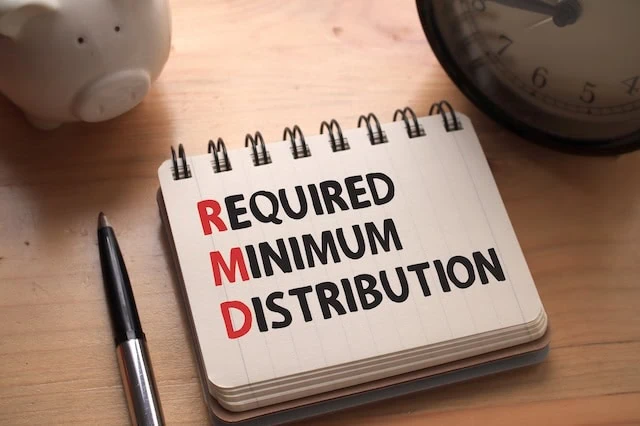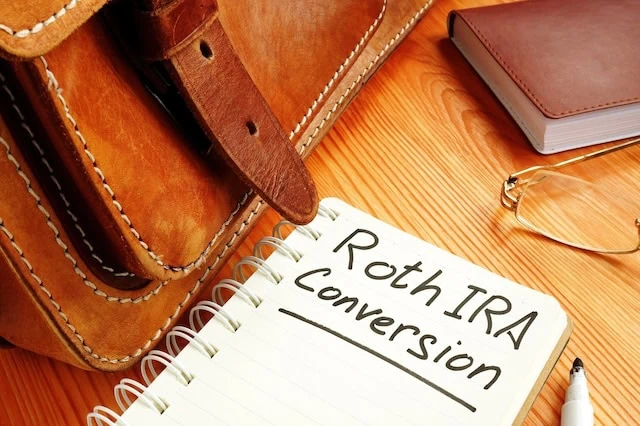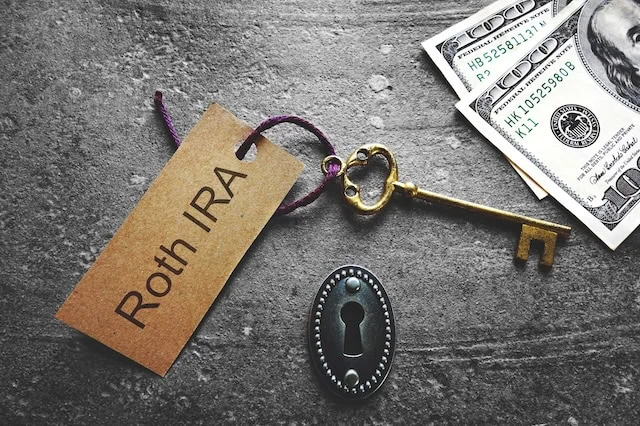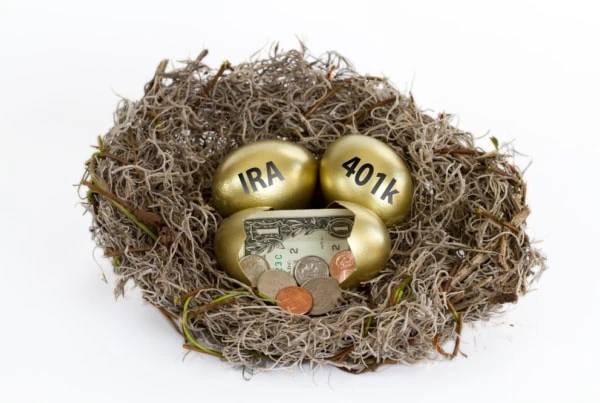If you’re reading this, you’ve likely spent decades growing your nest egg across one or more retirement accounts, and you’ve probably started to withdraw some of those funds.
As you’re probably aware, for the earliest years of your retirement, you can take out as much or as little of that money as you choose … but once you reach age 73, that changes. If you have money in certain popular types of retirement accounts (such as 401(k)s and traditional IRAs), the IRS requires you to withdraw money from them every single year. And I’m not talking about a token amount, like a penny or a dollar. These “required minimum distributions,” or RMDs, are often in the thousands or tens of thousands of dollars.
For some people, RMDs aren’t an issue—in fact, they need to withdraw more than the minimum anyways. But other people might prefer to avoid withdrawing that much money, as doing so could hinder their account(s) growth or might unnecessarily increase their tax burden.
Fortunately, if you’re 73 or older, and you want to withdraw money on your own terms, there are several ways you can do that and reduce your RMDs. Some of these reduction methods are unique to older retirees, while others let you reduce your RMDs before and after age 73.
Are All Retirement Accounts Subject to RMDs?

No, not all types of retirement accounts require the accountholder to take RMDs. Required minimum distributions generally apply to tax-deferred retirement accounts (where contributions are made on a pretax basis, but withdrawals are taxed). These accounts include.
- Traditional individual retirement accounts (IRAs)
- Traditional 401(k)s
- 403(b)s
- 457(b)s
- SEP IRAs
- SIMPLE IRAs
- Some inherited Roth IRAs
RMDs generally do not apply to tax-exempt retirement accounts (where contributions are made on an after-tax basis, but withdrawals are not taxed). These accounts include:
- Roth IRAs
- Roth 401(k)s (if you’re the original owner)
- Roth accounts inherited by a spouse and rolled into their own Roth.
Taxable brokerage accounts also don’t have RMDs, but they don’t offer any of the tax advantages that retirement-specific accounts provide.
When Do You Take RMDs?

You generally must begin taking required minimum distributions once you reach age 73.
Usually, you have until the end of the year (Dec. 31) to take your full distribution. However, for your first RMD, you have until April 1 of the following year—but even if you delay your first RMD, your second RMD is still due Dec. 31 of that same following year.
Example: You turn 73 in October 2026. You have until April 1, 2027, to make your first RMD. But you must make your second RMD by Dec. 31, 2027.
How Much Are RMDs?

The person taking distributions is ultimately responsible for calculating their own withdrawal minimum.
To calculate your required minimum distribution each year, do the following:
- Find the balance of each of your tax-deferred retirement accounts as of Dec. 31 of the prior year.
- Find your distribution period for the age you’ll turn in the current year. The IRS provides this information.
- Most people will use the Uniform Lifetime Table.
- If your spouse is at least 10 years younger than you and that person is listed as the 100% primary beneficiary of your account for the entire year, then you can calculate your RMD with the Joint and Last Survivor Life Expectancy Table.
- Divide each account balance by the distribution period to find each account’s RMD.
Example: You own a traditional IRA. You turn 73 in October 2026, and your spouse, the sole beneficiary of your IRA, is five years younger than you. Your first RMD is due April 1, 2027, based on your account balance on Dec. 31, 2025. Your account balance on Dec. 31, 2025, is $500,000. Your Distribution Period for age 73 is 26.5. Your first RMD is $18,868 ($500,000 / 26.5). (But remember: Your second RMD would be due Dec. 31, 2027, so you might consider taking your first RMD earlier; say, in 2026.)
If you have multiple IRAs, you can aggregate RMD amounts from all IRAs but withdraw the total RMD from a single IRA.
Also, you can always withdraw more than the required minimum if you wish in any given year. However, doing so may increase your tax obligation. Also, doing so doesn’t reduce your RMD obligation in subsequent years (other than reducing the account balance when calculating future years’ RMDs).
Do you want to get serious about saving and planning for retirement? Sign up for Retire With Riley, Young and the Invested’s free retirement planning newsletter.
Why Would You Want to Lower Your RMDs?

Distributions from a tax-deferred retirement account are considered taxable income. The bigger your withdrawals in a given year, the larger your potential tax burden—both in terms of the amount of income taxed, and in some cases, higher tax rates from being bumped into a higher bracket.
Conversely, reducing your required minimum distributions can lower your tax obligation.
It can also keep your retirement assets growing. The moment you withdraw money from a retirement account, that money is no longer invested—that means no more price appreciation, no more dividends, no more interest. Sure, once you’re in retirement, investment strategies tend to focus on wealth preservation over wealth accumulation … but if you have a relatively small nest egg, or if you’re planning for a very long requirement, you still might need a considerable amount of growth to make your retirement account last.
Related: How Much Social Security Will I Receive?
What Happens If You Don’t Take Your RMDs?

One thing you can’t do is simply refuse to take required minimum distributions.
If you ignore the rule and don’t withdraw enough (or any) money, the amount not withdrawn is subject to a hefty excise tax of 25%. However, if you correct the withdrawal within two years, the tax is lowered to 10%.
Also, if you can show that the shortfall in distributions was accidental—that you committed a reasonable error—and that you’re taking steps to fix it, the penalty could be waived outright.
Whether you’re trying to simply have the tax reduced or waived, you’ll need to file Form 5329, Additional Taxes on Qualified Plans (Including IRAs) and Other Tax-Favored Accounts. If you’re trying to have the tax waived, you’ll also want to include a letter of explanation.
Related: Don’t Overpay for Medicare: How to Avoid the Late Enrollment Penalty
6 Ways to Reduce RMDs

All of that said, required minimum distributions aren’t completely inflexible. There are several very legal ways in which you can reduce RMDs from your retirement accounts.
Here are some the best ways to lower your RMDs (and the accompanying tax burden).
1. Roth IRA Conversion

As I mentioned above, while tax-deferred accounts generally require RMDs, tax-exempt (Roth) accounts generally don’t. However, even if all of your retirement funds are currently saved in tax-deferred accounts, you can still execute a Roth IRA conversion to transfer some (or all) of that money into an RMD-free tax-exempt account.
A Roth conversion is just what it sounds like: You move money from a tax-deferred account to a Roth account (typically a Roth IRA).
It’s not a painless maneuver—you’ll have to pay taxes on whatever money you convert for the tax year in which you make the conversion, you’ll also have to wait five years before you can withdraw converted funds penalty-free (even if you’re over 59½), and it’s irreversible. But after that, you won’t have to pay taxes on withdrawals from your Roth IRA, and money in that Roth IRA won’t be subject to RMDs.
2. Backdoor Roth IRA Conversion

Some people who are interested in a Roth conversion will run into a hurdle: income limitations.
The maximum amount you can contribute to a Roth IRA in a given year is gradually reduced to nothing depending on the prior year’s modified adjusted gross income (MAGI). In 2025, how much you can contribute to a Roth IRA is gradually reduced to zero if your 2024 MAGI is …
- $150,000 to $164,999 (single, head-of-household filers)
- $236,000 to $245,999 (joint filers)
And you can’t contribute to a Roth IRA at all in 2025 if your 2024 MAGI is …
- $165,000 or more (single, head-of-household filers)
- $246,000 or more (joint filers)
If you’re married but file separately, your maximum contribution is gradually reduced to zero if your MAGI is between $0 and less than $10,000.
But if you don’t qualify, don’t fret—there’s still a loophole: the backdoor Roth IRA conversion.
In a traditional Roth conversion, you transfer deductible contributions from a traditional retirement account to a Roth account. However, in a backdoor Roth IRA conversion, you make nondeductible contributions to a traditional IRA, then complete a Roth conversion shortly thereafter.
Backdoor Roth IRA conversions can be complex, particularly as it pertains to the tax implications. If you’re interested in executing a backdoor Roth conversion, you should first consult a financial advisor.
Related: What’s the Best Tax Bracket for a Roth IRA Conversion?
3. Delay RMDs Through an Annuity

You might be able to delay part of your RMDs until age 85 through a qualified longevity annuity contract (QLAC).
A QLAC is a type of deferred annuity that you fund with retirement account assets. If you buy a QLAC with pretax funds from your 401(k) or IRA balance, you can exclude up to a certain amount from your RMD calculation. The lifetime limit as of the 2025 tax year is $210,000, though that number will change each year with inflation.
Example: Your first RMD, at age 73, based on an account balance of $500,000 and a Distribution Period of 26.5, would be $18,868 ($500,000 / 26.5). However, if you allocated the 2025 maximum to a QLAC ($210,000), your first RMD, based on an account balance of $290,000, would be $10,943 ($290,000 / 26.5).
QLAC distributions can be delayed until a predetermined date, but only up until your 85th birthday.
Much like with a Roth conversion, there are potential downsides. For instance, after you buy a QLAC, you can’t access those funds until you start taking payments. You also can’t participate in market growth anymore. So if you’re considering this route, talk to a financial advisor first.
Related: Retirement Buckets: A Simple Strategy for Your Retirement Savings
4. Make Qualified Charitable Distributions (QCDs)

This RMD reduction strategy is available only to people age 70½ and older.
You can make a qualified charitable distribution (QCD)—also known as IRA charitable distribution or IRA charitable rollover—from your IRA to a charity, then exclude that amount from your gross income. This break might help donors avoid reaching a higher income bracket, which in turn might prevent the phase-out of different tax deductions, such as personal exemption and itemized deductions.
The QCD limit for 2025 is $108,000 for individuals, or $108,000 for each spouse up to $216,000 for a married couple. QCDs must be made directly from the IRA, and donations can be made only to certain qualified charitable organizations as defined in the tax code.
If you plan to support a good cause anyway, you might as well do it in a tax-savvy way.
Related: 8 Special Tax Breaks for Senior Citizens
5. Carefully Plan Withdrawals to Manage Future RMDs

Rather than deciding your withdrawal amounts one year at a time, it’s better to have a withdrawal strategy in place.
For instance, once you reach age 59½, you might choose to withdraw an equal amount from tax-deferred accounts and other accounts—reducing the amount in tax-deferred accounts to reduce the amount you’ll have to take in RMDs later on.
But you can do the same thing later on in life, too. For instance, when you reach age 73, you could withdraw larger-than-necessary amounts (to spend on, say, home renovations or other large purchases). Again, while RMDs aren’t cumulative—taking a larger RMD one year doesn’t mean you’re allowed to take an equivalent amount less the next year—you’ll still reduce your future RMDs by having a smaller account balance.
This is yet another strategy you should discuss with a financial advisor before implementing.
Related: Don’t Make These Retirement Account Withdrawal Mistakes
6. Tweak Your Investment Portfolio Across Retirement Accounts

Assuming you have both tax-deferred accounts, as well as taxable and/or tax-exempt accounts, you can shift your investment mix to optimize for RMDs.
Let’s say your investment strategy involves both stocks and bonds, which it likely will. If you held most of your bonds and defensive stocks in a traditional IRA while holding most of your growth-oriented equities in a Roth IRA or taxable account, your tax-deferred accounts would grow less (and thus less money would be subject to RMDs) while your other accounts (which wouldn’t be subject to RMDs) would grow more—all while maintaining an appropriate overall asset mix.
Want to talk more about your financial goals or concerns? Our services include comprehensive financial planning, investment management, estate planning, taxes, and more! Schedule a call with Riley to discuss what you need, and what we can do for you.







![Should You Max Out Your 401(k) Each Year? [Yes...and No] 29 should you max out your 401k each year or invest elsewhere](https://youngandtheinvested.com/wp-content/uploads/should-you-max-out-your-401k-each-year-or-invest-elsewhere-600x403.webp)

